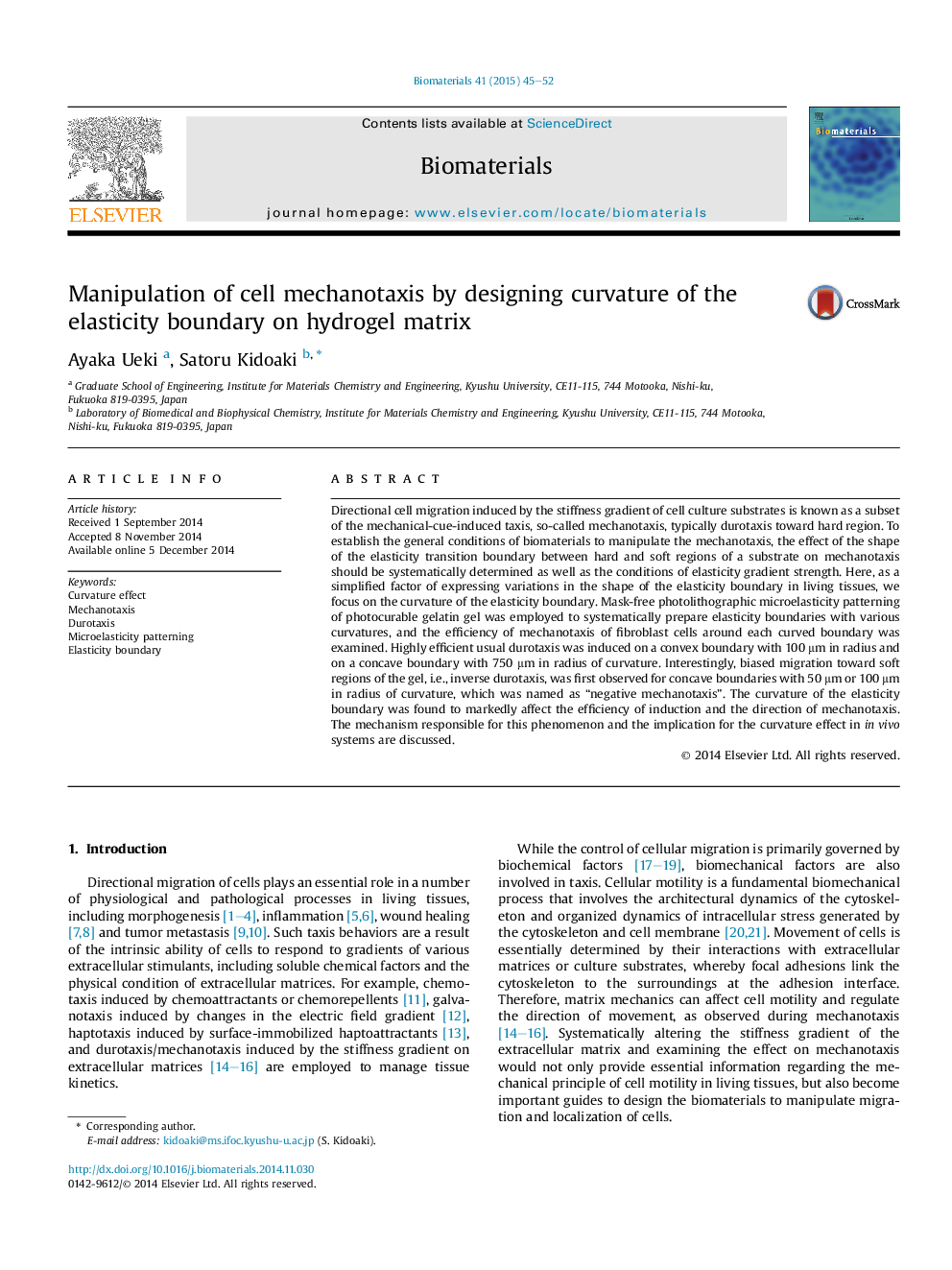| Article ID | Journal | Published Year | Pages | File Type |
|---|---|---|---|---|
| 6486286 | Biomaterials | 2015 | 8 Pages |
Abstract
Directional cell migration induced by the stiffness gradient of cell culture substrates is known as a subset of the mechanical-cue-induced taxis, so-called mechanotaxis, typically durotaxis toward hard region. To establish the general conditions of biomaterials to manipulate the mechanotaxis, the effect of the shape of the elasticity transition boundary between hard and soft regions of a substrate on mechanotaxis should be systematically determined as well as the conditions of elasticity gradient strength. Here, as a simplified factor of expressing variations in the shape of the elasticity boundary in living tissues, we focus on the curvature of the elasticity boundary. Mask-free photolithographic microelasticity patterning of photocurable gelatin gel was employed to systematically prepare elasticity boundaries with various curvatures, and the efficiency of mechanotaxis of fibroblast cells around each curved boundary was examined. Highly efficient usual durotaxis was induced on a convex boundary with 100 μm in radius and on a concave boundary with 750 μm in radius of curvature. Interestingly, biased migration toward soft regions of the gel, i.e., inverse durotaxis, was first observed for concave boundaries with 50 μm or 100 μm in radius of curvature, which was named as “negative mechanotaxis”. The curvature of the elasticity boundary was found to markedly affect the efficiency of induction and the direction of mechanotaxis. The mechanism responsible for this phenomenon and the implication for the curvature effect in in vivo systems are discussed.
Related Topics
Physical Sciences and Engineering
Chemical Engineering
Bioengineering
Authors
Ayaka Ueki, Satoru Kidoaki,
